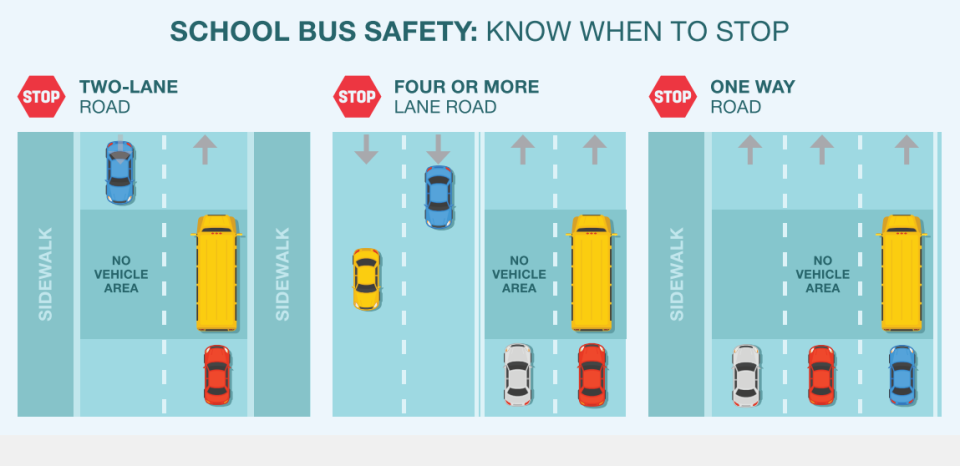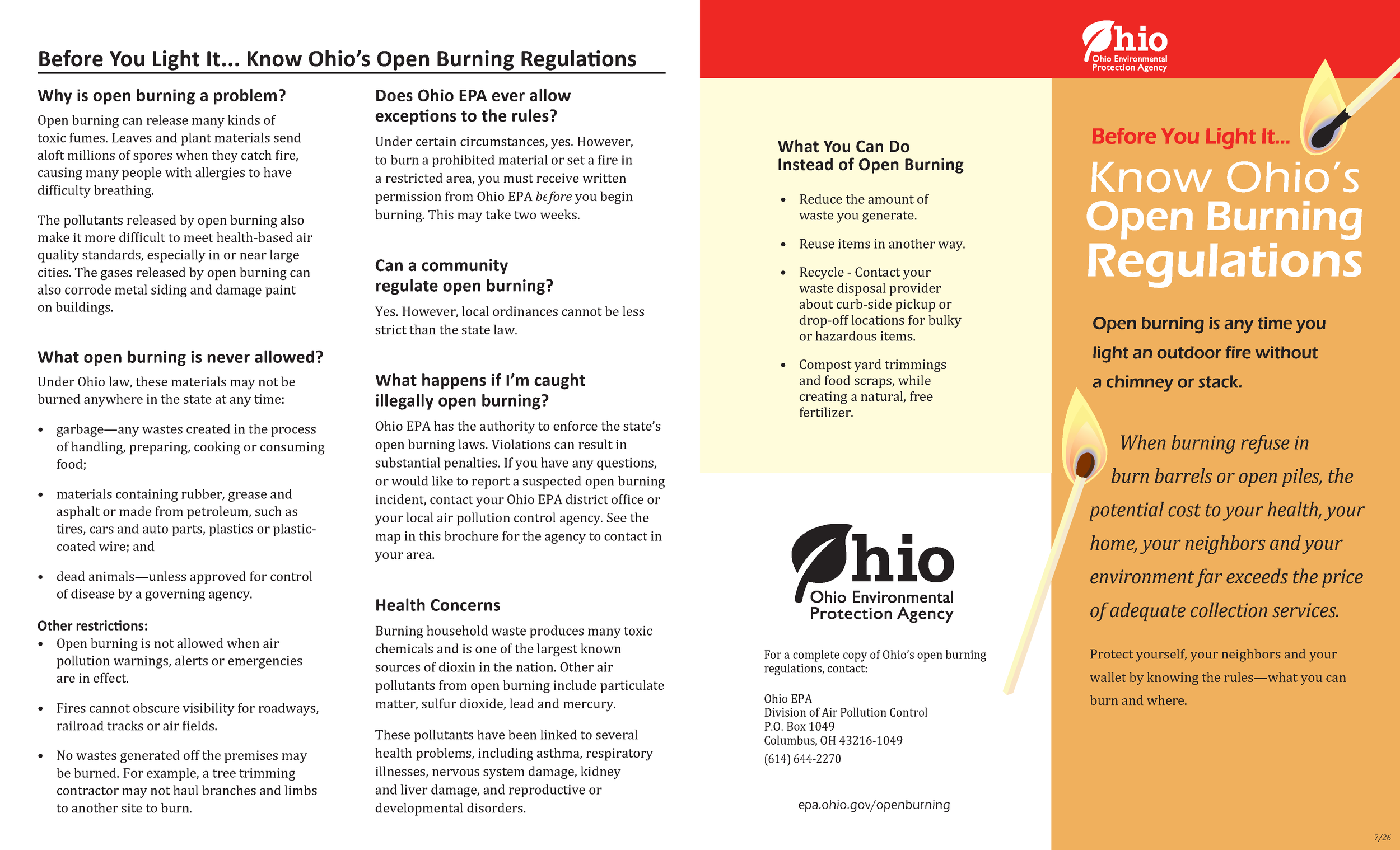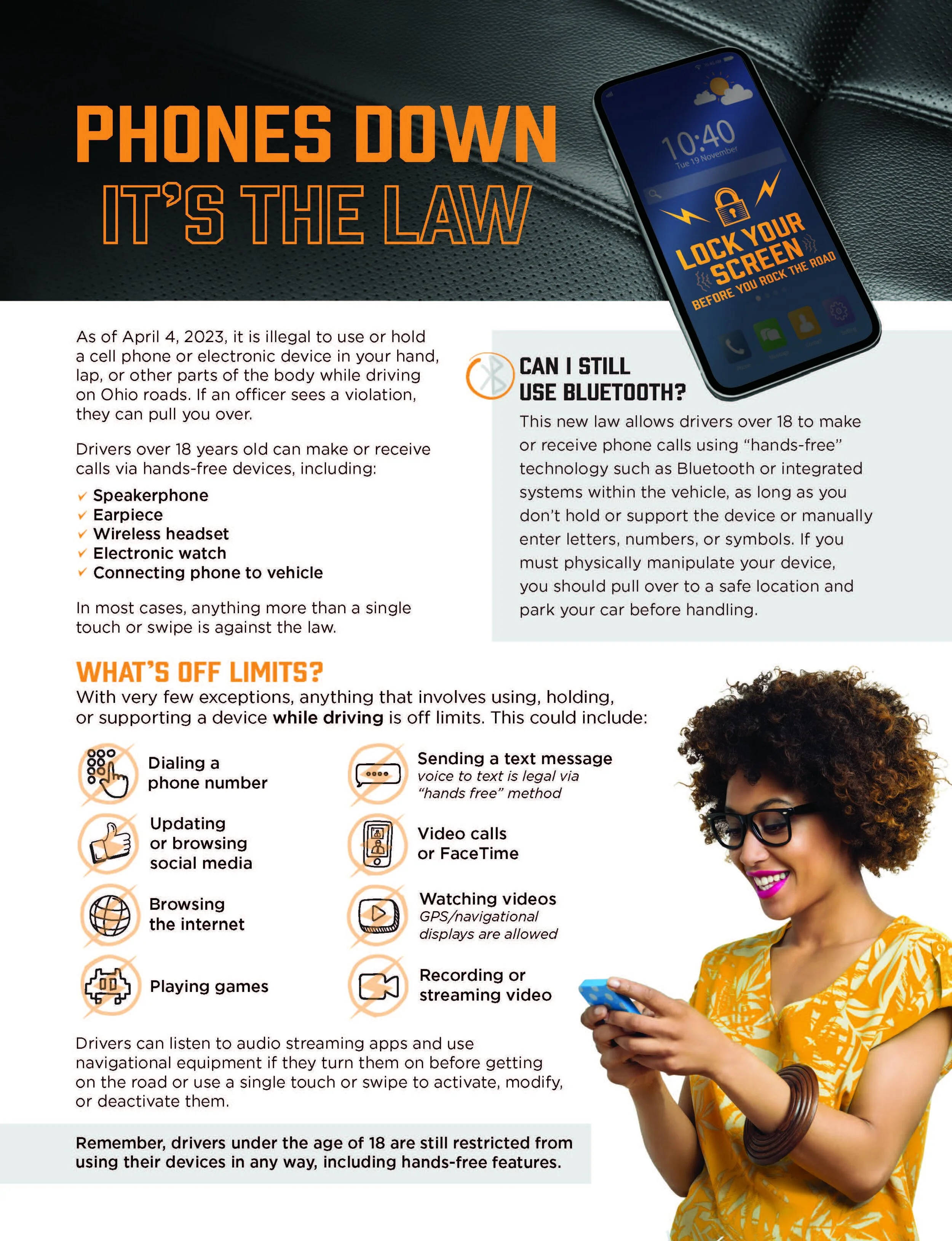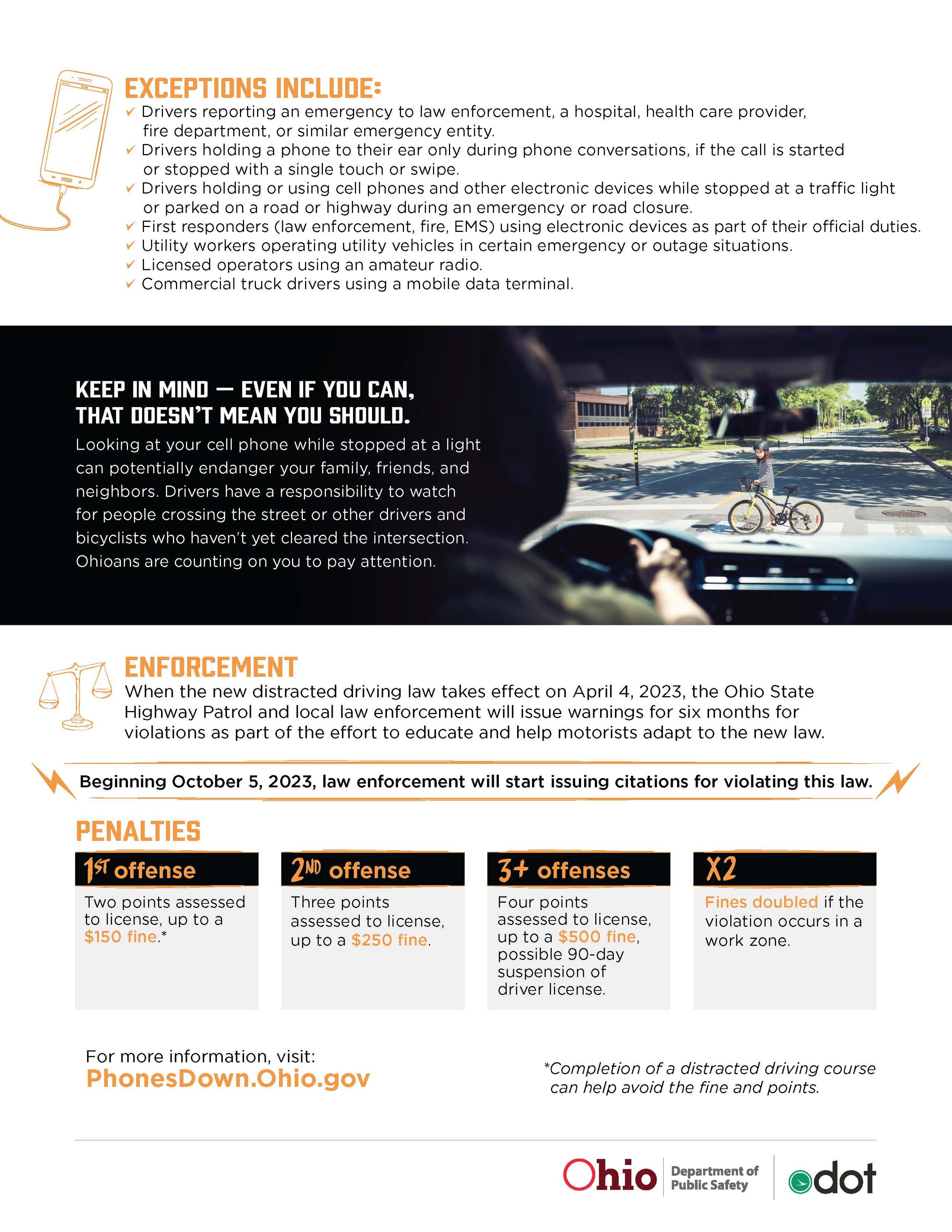On Friday, March 15, 2024, from 10:00 a.m. to 1:00 p.m. at Grace Church, 1144 West Main Street, Ashland, an Ashland County multi-agency large-scale training event will take place. There will be signage in the area of the training informing residents of the “training event”. Please avoid the area as some roads may be temporarily closed surrounding the church. Please do not call 911 or police agencies to ask what is occurring. THIS IS A CONTROLLED EVENT.
March S.A.L.T. Meeting
Scammers are Targeting Ashland Residents
SCAM ALERT
It has been brought to our attention that someone is calling Ashland area residents impersonating various members of the Ashland County Sheriff's Office. One of the call back numbers given was 419-558-6546. This is not an ACSO number. The message it gives is not from anyone at the ACSO.
Scammers can find all sorts of information on us and put enough of it together to sound legit. Do not trust caller ID, it can be spoofed. Scammers have been known to use the name of current or former deputies and officers as well. These calls can be frightening, the scammer wants to keep you off balance you so you'll fall for their demands.
Remember:
Deputies / Officers will not threaten to arrest unless you immediately pay a fine.
Deputies / Officers will not ask for prepaid money cards or gift cards as a form of payment.
Deputies / Officers will not clear up a warrant over the phone in exchange for payment.
Protect yourself by refusing to give the scammer any information. DON'T give them any money or bank account info. Hang up on the scammer.
For more information on phone scams click the following link.
https://consumer.ftc.gov/articles/phone-scams#whattodo
Does Medicare Call You at Home: How to Spot Medicare Phone Scams
Once you become eligible for Medicare, typically in the months before you turn 65, you may experience an uptick in calls from people who say they’re from Medicare-based organizations. These could be scam calls, and the people on the other end of the line are not official Medicare or Social Security representatives.
When enrolling in Medicare, you should know that neither Social Security nor Medicare will ever call you to get information. Should any Medicare or Social Security need to contact you, they will always send you a letter to notify you.
What is a Medicare Scam?
Medicare scams are typically people calling or emailing you asking for sensitive information while claiming to be Medicare representatives. Most of the time they are pretending to be from Medicare or from a legitimate Medicare insurance company or brokerage.
Medicare frauds want you to give them private information so that they can steal your identity or trick you into giving them as much of your money as they can.
If someone claiming to be associated with Medicare asks you for any of the following information, it’s most likely a scam. You should never give out this information to someone who has contacted you first.
Social Security number
Bank account number
Current Medicare card number
Credit card number
Full address
Full name (first, middle, last)
Maiden name
DO NOT respond to any scammers, JUST HANG UP!
Then call the organization they are claiming to call from directly.
If you reach out to Medicare, Social Security, your insurance company, or an insurance broker, make sure you have the correct, legitimate phone number off of the organization’s official website or any printed mail you receive from them.
Click here for information on: Reporting Medicare Fraud & Abuse
Lucas County Couple Sentenced for Illegal Scrap Tire Operation
News Releases
Lucas County Couple Sentenced for Illegal Scrap Tire Operation
2/16/2024
(TOLEDO, Ohio) — A Lucas County judge sentenced a Toledo couple to three months in jail and six months at a correctional drug treatment facility for illegally transporting and dumping scrap tires, Ohio Attorney General Dave Yost announced.
Chad T. Gatter, 35, and Amanda N. Wagner, 36, pleaded guilty to the unclassified felony charges in Lucas County Common Pleas Court.
“These convictions send a clear message that illegal dumping will not be tolerated in our communities,” Yost said. “We will continue to hold accountable those who disregard environmental laws and endanger public health.”
The nine-month sentence includes three months at the Corrections Center of Northwest Ohio at Stryker and six months at the Lucas County Correctional Treatment Facility in Toledo. Additionally, the couple will be subject to three years of community control and required to pay restitution to the Ohio Environmental Protection Agency.
The charges stem from summer 2022 when Gatter and Wagner illegally hauled more than 2,000 scrap tires from Toledo tire stores without proper authorization from Ohio EPA. The tires were then unlawfully dumped in the backyard of their residence at 1679 Tracy Road. Complaints from concerned neighbors prompted an investigation by the City of Toledo, leading to criminal charges against the couple.
Special agents from the Bureau of Criminal Investigation’s Environmental Enforcement Unit conducted surveillance and obtained video evidence of the illegal tire operation.
Charges also were filed against Osama Al Awkati, owner of Uncle Sam’s Auto Center in Toledo, for his involvement in supplying scrap tires to Gatter and Wagner. Awkati was convicted of misdemeanors in December 2023 for his role in the scheme.
In September 2022, the Ohio EPA conducted a cleanup operation at the Tracy Road residence because of the environmental hazard the tires posed. More than 24 tons of scrap tires were removed to a licensed facility at a cost of $15,630, which Gatter and Wagner were ordered to pay as restitution.
This case underscores the commitment of Ohio law enforcement agencies and regulatory bodies to hold accountable those who jeopardize public health and the environment through illegal activities.
AG Yost recently launched a campaign to bring great resources to address open dumping, particularly of scrap tires. The program, “Shine a Light on Dumpers,” is a multipronged campaign designed to expose illegal open dumping of solid wastes – including scrap tires, demolition debris and more – and to eliminate these inexcusable eyesores from Ohio neighborhoods. Shine a Light on Dumpers has online resources focusing on awareness, legal guidance, training, and investigative/prosecutorial assistance from the Attorney General’s Office.
MEDIA CONTACT:
Hannah Hundley: 614-906-9113
S.A.L.T. Winter Schedule
Seniors and Law Enforcement Together (S.A.L.T) The Ashland County Sheriff's Office TRIAD/SALT program is designed to bridge the gap between senior citizens and law enforcement. To address issues and concerns that involve crime prevention and safety issues regarding our growing population of seniors.
S.A.L.T. Meets at 10:00AM on First Thursday of every month at the Sheriff's Office Annex, 1205 E. Main St. Ashland, OH unless announced otherwise.
We hope to see our Seniors there.
School Bus Safety Season Is Here
School begins this week. Here is a refresher on the laws about stopping for a school bus.
In Ohio, school bus traffic laws vary depending on the size of the road:
Two-Lane Roads:
All traffic must stop for a school bus no matter which direction it’s traveling.
Traffic must stop at least 10 feet away from the school bus, whether approaching the front or rear of the bus.
Highways with Four or More Lanes:
Only traffic moving in the same direction as the bus must stop when the school bus stops to release passengers.
Traffic coming from the opposite direction doesn’t have to stop in these instances.
Children are dropped off on the same side of the road as their residences. They should not have to cross the street. Just the same, it would be wise to be alert and slow down.
Divided Highways:
Divided highways are treated the same as those with four or more lanes.
Oncoming traffic doesn’t have to stop regardless of how many lanes of traffic there are, but traffic moving in the same direction still has to stop.
Traffic must stop no less than 10 feet away from the school bus.
School Bus Safety Requirements for Traffic:
A school bus doesn’t have to be equipped with an extending stop safety sign in order for traffic to stop.
When lights are flashing, this is sufficient to signal drivers that they need to stop, as the bus is loading or unloading passengers.
Amber and red visual signals are required for a school bus.
Violation of School Bus Traffic Laws:
Those who violate school bus traffic stop laws may receive a $500 fine and could have their driver’s license suspended. Some communities in Ohio the maximum fine is $1000 and 30 days in jail.
Please be mindful as school starts back up, and buses are back on the road.
And please Buckle Up!
Ohio Department of Public Safety Warns of Sophisticated Identity Theft Scheme
For Immediate Release: June 27, 2023
Ohio Department of Public Safety Warns of Sophisticated Identity Theft Scheme
(COLUMBUS, Ohio) – The Ohio Department of Public Safety today issued a warning about a sophisticated identity theft scheme impacting individuals across the country, including in Ohio.
The scheme, which was first identified in Texas earlier this year, involves the use of stolen personal information to answer online Bureau of Motor Vehicles (BMV) security questions and gain access to individual BMV accounts. Once inside an individual’s account, identity thieves then request a driver’s license or identification card reprint be mailed to a new address.
“This scheme is incredibly concerning, not only because criminals are ordering up legitimate driver’s licenses but because they can use these cards and the stolen personal information to potentially access your bank account,” said Ohio Department of Public Safety Director Andy Wilson. “If you receive a postcard from the Ohio BMV telling you about an address change that you did not request, it’s important that you immediately take action.”
Thousands of replacement driver’s licenses were sent to unauthorized parties using stolen personal information in Texas. In Ohio, the BMV has initiated contact with around 90 Ohioans whose stolen information was used to obtain or attempt to obtain a driver’s license reprint. It is unknown where the criminals obtained the stolen personal information. No State of Ohio systems were breached.
The Ohio BMV has reported the fraud to federal, state, and local law enforcement agencies and has devoted additional resources to monitor for patterns associated with this criminal activity. Due to this additional monitoring, it is unlikely that additional fraudulently requested Ohio driver’s licenses will be mailed, however, if you receive a postcard from the BMV notifying you of online profile changes that you did not request, you should immediately contact the BMV at 1-(844)-644-6268. It is also recommended that you file a report with your local law enforcement agency, change answers to your online security questions, and place an initial fraud alert on your credit file.
More information on steps to take if your identity is stolen can be accessed via the Ohio Attorney General’s Office.
An example of a BMV address change postcard can be found below. Postcards are mailed to customers’ old addresses any time an address change is made.
Signs of an Opioid Overdose & When to Use Naloxone
Opioids affect the body’s receptors that are related to breathing, which causes breathing to become slow and shallow. A person’s breathing can stop within minutes to hours after using the drug. Once breathing stops, brain damage can start within three to five minutes without oxygen, leading to death.
A death from an opioid overdose can happen quickly, most often when the person is alone and no one is around to intervene.
Signs of an OVERDOSE, which may often result in death if not treated.
Difficulty walking or talking, unconsciousness or inability to stay awake.
Extreme drowsiness, tiny pupils.
Slow or shallow breathing. Breathing difficulty such as choking sounds or a gurgling / snoring noise from a person who cannot be awakened.
Fingernails or lips turning blue / purple.
Confusion and/or disorientation.
Unable to wake them by shaking or yelling at them.
Slow or weak pulse.
If an opioid overdose is suspected, CALL 911. Inform the Emergency Operator of your location and that you suspect an overdose. Attempt to wake or stimulate the person:
Call the person’s name. Tap their shoulder or shake them.
If this doesn’t work, vigorously rub knuckles into the sternum (the breastbone in middle of chest) or rub knuckles on the person’s upper lip.
If the person responds, assess whether he or she can maintain responsiveness and breathing.
Continue to monitor the person, including breathing and alertness, and try to keep the person awake and alert.
If the person does not respond:
Administer naloxone (Narcan) if available.
Begin rescue breathing if the person is not breathing on their own.
Tilt their head back to open the airway and check their mouth to make sure it is not blocked. Begin rescue breathing by pinching their nostrils, placing your mouth entirely over theirs, and breathing into their mouth every five seconds for 30 seconds for an adult.
Place the person onto their side to prevent choking and remain with them until emergency services arrive.
If they are not breathing and do not have a pulse, begin CPR. The dispatcher can talk you through it if you are not trained.
Printable Tri-fold of above Pamphlet
Learn more about Drug Education & Prevention at SUPE | Substance Use Prevention Education (addicted.org)
Report Shows Decline in Distracted Driving Since New Ohio Law Went into Effect
(COLUMBUS, Ohio) – Ohio Governor Mike DeWine and leaders from the Ohio Department of Transportation (ODOT) and the Ohio Traffic Safety Office (OTSO), a division of The Ohio Department of Public Safety, are encouraged by new data that shows the state’s strengthened distracted driving law is making a positive impact on Ohio’s roadways.
“Ohio’s new law went into effect a little over a month ago, and it’s already making a difference,” said Governor DeWine. “I’m glad to see that Ohio drivers are making safety a priority and putting their phones down while they drive.”
The report from Cambridge Mobile Telematics (CMT), the world’s largest telematics service provider, shows Ohio drivers are now spending less time handling their phones while driving since the law went into effect on April 4, 2023. The law makes it illegal in most cases for drivers to use or hold a cell phone or electronic device. The violation is now considered a primary offense, meaning any officer can pull over a driver immediately if they witness a violation.
CMT’s data analysis shows a 9.1% reduction in distracted driving in Ohio since April 4 has helped prevent 540 crashes, one fatality, and $13 million in economic damages. In March, Ohio drivers spent an average of 1 minute and 39 seconds interacting with their phones for every hour of driving. From April 4 through May 3, Ohio drivers used their phones while driving 1 minute and 30 seconds, a 9-second drop.
“We are pleased that Ohio drivers are taking this new law seriously and beginning to change their behavior, but there is still more work to do,” said Emily Davidson, executive director of the Ohio Traffic Safety Office. “There is no acceptable level of distracted driving. This behavior is dangerous and puts everyone on the road at risk. The goal is for all drivers to put their phones down for the entire time they are behind the wheel.”
“States that pass hands-free laws typically see a decrease in hand-held phone use and crashes. This data shows we’re on the right track to making our streets and highways safer in Ohio,” said Michelle May, manager of ODOT’s Highway Safety Program. “I believe more Ohioans will choose to put their phones downs as they learn about the new law and the dangers of interacting with their screens while driving.”
A public awareness campaign is underway now to teach drivers about the new law. The “Phones Down. It’s The Law.” campaign includes television and radio ads, billboards, social media, and a new website at phonesdown.ohio.gov. The campaign will be active during the law’s 6-month grace period where The Ohio State Highway Patrol and local law enforcement will be issuing warnings as part of the effort to educate drivers. As of May 10 2023, over 2,100 campaign materials have been distributed to traffic safety partners across Ohio.
"We applaud The State of Ohio for their proactive approach to fight distracted driving and save lives on our roads," said Ryan McMahon, SVP of Strategy for Cambridge Mobile Telematics. “We’ve seen again and again how hands-free legislation raises awareness around the dangers of distraction and helps reduce drivers’ phone use. We’re encouraged by the 9.1% reduction in distraction we’ve seen after one month of the law being implemented in Ohio and are proud to supply road safety planners with the resources and insights needed to evaluate its impact."
###
The Ohio Traffic Safety Office (OTSO), a division of the Ohio Department of Public Safety, focuses on a mission to save lives and reduce injuries on Ohio’s roads by using creative leadership, innovative education, and comprehensive enforcement programs. OTSO strives to work in partnership with local, state and federal entities to advance equity in highway safety programs, ensuring they benefit all road users in Ohio. Last year, OTSO awarded over $22 million in federal funds to 140 Ohio agencies for statewide programming to improve traffic safety and reduce traffic-related fatalities.
For additional information, contact:
Judy Converse
Public Information Officer, Ohio Traffic Safety Office
(614) 644-6052
jlconverse@dps.ohio.gov
Ohio Traffic Safety Office Releases New Video in Series Aimed at Reducing Teen Crashes
(COLUMBUS, Ohio) – Ohio Governor Mike DeWine and the Ohio Traffic Safety Office announced today that a new educational video aimed at teenage drivers has been released for National Youth Traffic Safety Month in May.
“Any time we can provide more educational resources for Ohio’s young drivers, it makes our roads safer for everyone,” said Governor DeWine. “The safe habits they adopt now will increase the likelihood that they become safe drivers over their lifetimes.”
The five-minute video features young hosts “Ava” and “Noah,” explaining Ohio’s traffic laws when it comes to sharing the road with bicyclists, school buses, large trucks, emergency vehicles, and pedestrians. The video is designed to be included as part of the required 24 hours of classroom instruction in Driver Education classes across Ohio. Governor DeWine announced the first video in the series, which addresses distracted driving, in July. That video has been viewed over 2,800 times on the Ohio Department of Public Safety’s YouTube page in the last eight months.
“The first video we produced for teen drivers was so well-received across the state, that we knew we had to do more,” said Emily Davidson, executive director of the Ohio Traffic Safety Office. “Sharing the road is an important safety topic in our driver education curriculum, and this engaging video demonstrates in a creative and memorable way what young drivers need to know to keep everyone safe on our roads.”
Youth-related (age 15-24) fatal crashes in Ohio have been steadily rising over the past three years:
There were 290 deaths as a result of youth-related crashes in 2022, accounting for almost 24% of all crashes.
Young drivers under the age of 24 are involved in 31% of all crashes in Ohio.
The county with the highest number of youth-related crashes is Hamilton County – with 48,696 crashes since 2018.
Statewide statistics show that “youth-related” is one of the top two crash categories in every Ohio county. Early estimates from National Highway Traffic Safety Administration show Ohio ranked ninth in the nation for motor vehicle traffic fatalities in 2022.
See the new teen driver safety video on YouTube: https://youtu.be/wSDJ2CHRXdg
# # #
The Ohio Traffic Safety Office (OTSO), a division of the Ohio Department of Public Safety, focuses on a mission to save lives and reduce injuries on Ohio’s roads by using creative leadership, innovative education, and comprehensive enforcement programs. OTSO strives to work in partnership with local, state and federal entities to advance equity in highway safety programs, ensuring they benefit all road users in Ohio. Last year, OTSO awarded over $22 million in federal funds to 140 Ohio agencies for statewide programming to improve traffic safety and reduce traffic-related fatalities
Forms of Fentanyl Encountered in Ohio
Parent's Guide to Fentanyl
Before You Light It... Know Ohio’s Open Burning Regulations
State Agencies Warn of Cryptocurrency Scams Targeting Older Adults
If you or a loved one believe you have been a target of a cryptocurrency scam, please see the
following resources and reporting guidelines:
State Resources & Reporting:
• Ohio Department of Aging: Stop Scams Before They Start: https://aging.ohio.gov/care-andliving/get-help/elder-justice/stop-scams-before-they-start
• For local services and support for older adults and caregivers, call 1-866-243-5678 to be
connected to the organization on aging serving your community.
• Ohio Attorney General’s Office, Elder Justice Unit: Report a scam:
https://www.ohioattorneygeneral.gov/About-AG/Contact/Report-AScam
Federal Resources & Reporting:
• Federal Trade Commission (FTC): Report fraud: (202-326-2000)
https://reportfraud.ftc.gov/#/form/main
• Internet Crime Complaint Center (IC3): https://www.ic3.gov/home/fileComplaint
• Commodity Futures Trading Commission (CFTC): https://www.cftc.gov/complaint
• U.S. Securities and Exchange Commission (SEC) https://www.sec.gov/tcr
Cryptocurrency Platforms:
• Always contact the cryptocurrency exchange company where the funds (i.e. Bitcoin) were sent or
transferred. Most cryptocurrency exchanges have scam reporting features.
New Law: Phones Down, It's the Law
Ohio Narcotics Intelligence Center Warns of Emojis Symbolizing Potential Drug Activity
(COLUMBUS, Ohio) —The Ohio Narcotics Intelligence Center (ONIC) released a public safety bulletin today alerting parents that emojis are being used by youth on social media and electronic communications to market, sell, and buy illegal drugs.
Emojis used in drug communications commonly refer to the physical, psychological, or physiological characteristics of the drugs. The presence of these emojis in communications can be one indication of possible drug activity, though it is important to note that these meanings are not definitive and emojis can be used in other ways.
“The use of emojis in this manner is a nationwide trend, and our analysts are seeing it here in Ohio as they analyze electronic devices seized in ongoing drug investigations,” said Cynthia Peterman, ONIC Executive Director. “Although use of these emojis is most often harmless, it’s important that parents keep this alert in mind, especially if their child is showing other signs of withdrawal or drug abuse.”
Emojis can refer to specific types of drugs such as a peeled banana for oxycodone/Percocet, a step ladder for alprazolam/Xanax, a snail for fentanyl, or a palm tree for marijuana.
Emojis are also used in generic ways to denote a drug dealer with an electrical outlet plug or the price of a drug by using a concert ticket stub. Other general references include using a flame, gasoline pump, or goat to depict the high potency of a drug and an astronaut, rocket, or face with an exploding brain to describe the euphoria of drug use.
To report a drug tip to ONIC, please call 1-833-OHIO-NIC (644-6642).
Governor DeWine signed an executive order in July 2019 creating ONIC, a specialized criminal intelligence unit to assist local law enforcement in conducting intelligence-driven drug trafficking investigations. Operated as part of the Ohio Department of Public Safety, ONIC has locations in Cincinnati, Cleveland, Columbus, and Toledo. ONIC’s criminal intelligence analysts and computer forensic specialists provide investigative, analytical, and digital forensic support to local law enforcement agencies and drug task forces throughout Ohio.





















